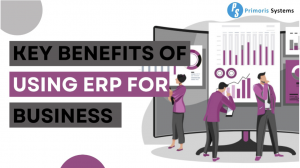Maximizing Workplace Inclusion and Diversity: Harnessing Data-Driven Strategies for an Empowered Corporate Culture

In the modern workplace, diversity and inclusion (D&I) are more than just buzzwords—they are integral to building a successful and innovative business. An inclusive culture not only fosters a sense of belonging among employees but also drives creativity, productivity, and ultimately, profitability. However, creating such a culture isn’t as simple as declaring support for diversity; it requires a strategic approach underpinned by measurable metrics. This blog explores how organizations can leverage D&I metrics to build a truly inclusive culture.
Understanding the Importance of D&I Metrics
To start, let’s understand why measuring diversity and inclusion is essential. Like any business initiative, the success of D&I efforts can only be assessed through quantifiable data. Metrics provide insight into the effectiveness of D&I strategies, identify areas for improvement, and ensure accountability. They help organizations track progress, make informed decisions, and communicate the impact of their D&I initiatives to stakeholders.
Key Diversity and Inclusion Metrics to Track
1. Workforce Demographics: This includes data on the composition of your workforce, considering aspects like race, gender, age, disability, and veteran status. Tracking these demographics over time can reveal trends in hiring, promotions, and retention.
2. Representation in Leadership Roles: It’s crucial to measure diversity not just at the entry-level but also in senior management and leadership roles. This indicates whether there are barriers to advancement for certain groups.
3. Pay Equity: Analyzing compensation data across different demographics helps in identifying and addressing any pay disparities that exist within the organization.
4. Retention Rates: Disaggregating turnover rates by different demographic groups can highlight whether certain populations are leaving the organization at higher rates.
5. Employee Sentiment: Surveys and feedback mechanisms can gauge employees’ perceptions of inclusivity, belonging, and fairness within the organization.
Steps to Leverage D&I Metrics Effectively
Setting Clear Goals and Benchmarks
The first step in leveraging D&I metrics is setting specific, measurable goals. These goals should align with the broader business objectives and D&I vision of the organization. Benchmarks, meanwhile, can be set by comparing internal data with industry standards or national averages.
Collecting and Analyzing Data
Gathering accurate and comprehensive data is crucial. This involves not only quantitative data, such as workforce demographics but also qualitative data, such as employee feedback. Advanced analytics can then be applied to this data to identify patterns and insights.
Communicating Insights and Progress
Transparency in sharing D&I metrics fosters trust and accountability. Regularly communicating progress towards D&I goals with all stakeholders, including employees, leadership, and external partners, is vital.
Actionable Strategies Based on Data
Data should inform the development of targeted D&I initiatives. For instance, if data reveals a gender gap in leadership roles, the organization might implement mentorship programs for women employees.
Continuous Monitoring and Adjustment
D&I is a dynamic field, and what works today may not be effective tomorrow. Continuous monitoring of D&I metrics allows organizations to adjust their strategies in response to evolving challenges and opportunities.
Challenges in Measuring D&I
While measuring D&I is essential, it comes with its set of challenges. Privacy concerns, especially when collecting sensitive demographic data, are paramount. Additionally, there’s a risk of reducing complex human experiences to mere numbers, which can oversimplify the issues. Organizations must approach D&I metrics with sensitivity and a commitment to ethical data practices.
Best Practices for Building an Inclusive Culture Using D&I Metrics
Leadership Involvement: Senior leadership must be actively involved in D&I efforts. Their commitment is crucial in driving change and embedding D&I into the organizational culture.
Employee Engagement: Employees should be encouraged to participate in D&I initiatives. This could be through feedback surveys, focus groups, or inclusion councils.
Training and Education: Regular training sessions can educate employees about unconscious bias, cultural competency, and the importance of diversity and inclusion.
Celebrating Diversity: Recognizing and celebrating diverse cultures, traditions, and perspectives within the organization can promote a sense of belonging.
Inclusive Policies and Practices: Policies and practices, such as flexible working arrangements, inclusive hiring practices, and grievance redressal mechanisms, play a critical role in fostering an inclusive environment.
Conclusion
Leveraging D&I metrics is essential in building an inclusive culture. It enables organizations to move beyond good intentions to create a workplace where diversity is not just welcomed but celebrated. By strategically employing these metrics, companies can ensure their D&I initiatives are effective, sustainable, and aligned with their core values and business objectives. Ultimately, the goal is to create an environment where every employee feels valued, respected, and empowered to contribute to their fullest potential.




